Bevacizumab (bevacizumab) is a recombinant hyperhaline (humanitarian, approximate to the human) monoclonal antibody that selectively binds to a biologically active growth factor vascular endothelial
Buy Bevacizumab Price Bevacizumab
-
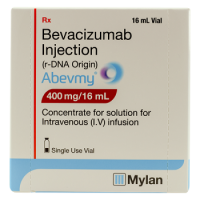 Abevmy 400mg BevacizumabIn Stock: много
Abevmy 400mg BevacizumabIn Stock: много -
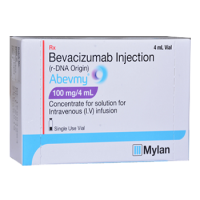 Abevmy 100mg BevacizumabIn Stock: много
Abevmy 100mg BevacizumabIn Stock: много -
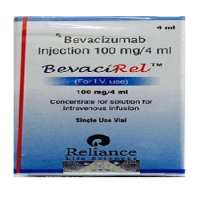 Bevacirel Bevacizumab 100mg / 4mlIn Stock: много
Bevacirel Bevacizumab 100mg / 4mlIn Stock: много -
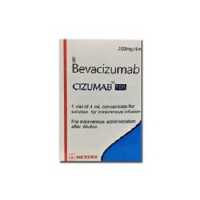 Cizumab Bevacizumab 100mg / 4mlIn Stock: много
Cizumab Bevacizumab 100mg / 4mlIn Stock: много -
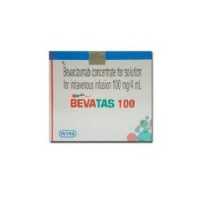 Bevatas Bevacizumab 100mg / 4mlIn Stock: много
Bevatas Bevacizumab 100mg / 4mlIn Stock: много -
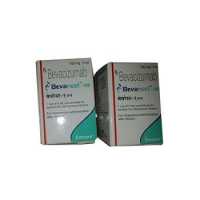 Bevarest Bevacizumab 100mg / 4mlIn Stock: много
Bevarest Bevacizumab 100mg / 4mlIn Stock: много -
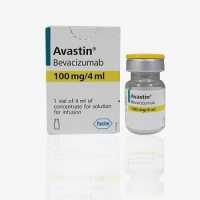 Avastin Bevacizumab 100mg / 4mlIn Stock: много
Avastin Bevacizumab 100mg / 4mlIn Stock: много
Bevacizumab
Pharmacological action
Pharmacodynamics
Bevacizumab (bevacizumab) is a recombinant hyperhaline (humanitarian, approximate to the human) monoclonal antibody that selectively binds to a biologically active growth factor vascular endothelial
(vascular endothelial growth factor-VEGF) and neutralizes it. Avastin inhibits the binding of vascular endothelial growth factor to its type 1 and type 2 receptors (Fit-1, KDR) on the surface of endothelial cells, which leads to reduced vascularization and inhibition of tumor growth. Bevacizumab contains the fully human skeleton plots complementarity determining plots hipermercado mouse antibodies that bind to VEGF. Bevacizumab is produced by recombinant deoxyribonucleic acid (DNA) technology in a system for expression represented by Chinese hamster ovarian cells. Bevacizumab consists of 214 amino acids and has a molecular weight of about 149 Dalton LTD.
The introduction of bevacizumab leads to the suppression of metastatic progression of the disease and a decrease in microvascular permeability in various human tumors, including cancer of the colon, breast, pancreas and prostate.
Preclinical safety data
The carcinogenic and mutagenic potential of Bevacizumab has not been studied.
When the animal drug Bevacizumab was administered, embryotoxic and teratogenic effects were observed.
In actively growing animals with open growth zones, the use of Bevacizumab was associated with cartilage plate dysplasia.
Pharmacokinetics
The pharmacokinetics of Bevacizumab after intravenous administration (I/V) in different doses (0.1-10 mg/kg every week; 3-20 mg/kg every 2 or 3 weeks; 5 mg/kg every 2 weeks or 15 mg/kg every 3 weeks) was studied in patients with various solid tumors.
The pharmacokinetics of bevacizumab, like other antibodies, is described by a two-chamber model. The distribution of Bevacizumab is characterized by low clearance, low volume of distribution in the Central chamber (Vc) and a long half-life, which allows to achieve the necessary therapeutic concentration of The drug in plasma when administered once every 2-3 weeks.
Bevacizumab clearance does not depend on the age of the patient.
The clearance of bevacizumab is 30% higher in patients with a low albumin level 7 %
higher in patients with a large tumor mass in comparison-e-Nasaud-am-I-so-average....
the values of albumin and tumor mass. Buy Bevacizumab directly from India, Bevacizumab factory price directly from India without breeders.
Distribution
Vc is 2.73 l and 3.28 l in women and men, respectively, which corresponds to the volume of distribution of immunoglobulins of class G (IgG) and other monoclonal antibodies. The volume of distribution in the peripheral chamber (Vp) is 1.69 l and 2.35 l in women and men, respectively, in the appointment of bevacizumab with other anticancer drugs. After dose adjustment based on body weight in men Vc 20% more than in women.
Metabolism
1 LS
After a single I-bevacizumab injection, its metabolic characteristics are similar to those of a natural IgG molecule that does not bind to VEGF. The metabolism and excretion of bevacizumab corresponds to the metabolism and excretion of endogenous IgG, i.e. it is mainly carried out by proteolytic catabolism in all cells of the body, including endothelial cells, and not through the kidneys and liver. Binding IgG to neonatal receptors to the crystallizing IgG fragment (FcRn receptors) protects It from cellular metabolism and provides a long half - life.
Breeding
The pharmacokinetics of bevacizumab in the dose range from 1.5 to 10 mg / kg per week is linear.
Bevacizumab clearance is 0.188 l / day in women and 0.220 l / day in men.
After dose adjustment based on body weight in men bevacizumab clearance 17% more than in women. According to the two - chamber model, the half-life is 18 days for women and 20 days for men.
Pharmacokinetics in special groups of patients elderly Patients (over 65 years)
There was no significant difference in the pharmacokinetics of bevacizumab depending on age. Buy Bevacizumab Price Bevacizumab India
Children and adolescents
There are limited data in the pharmacokinetics of bevacizumab in children and adolescents. Available data indicate that there is no difference between the volume of distribution and clearance of bevacizumab in children, adolescents and adults with solid tumors.
Patients with renal insufficiency
Safety and efficacy of bevacizumab in patients with renal insufficiency q has not been studied, because the kidneys are not the main organs of metabolism and excretion of bevacizumab.
Patients with liver failure
Safety and efficacy of bevacizumab in patients with hepatic insufficiency has not been studied, because the liver is not the main organ of metabolism and excretion of bevacizumab.
Indications for use
Metastatic colorectal cancer:
* in combination with chemotherapy based on fluoropyrimidine derivatives.
Locally recurrent or metastatic breast cancer:
• as the first line of therapy in combination with paclitaxel.
Common inoperable, metastatic or recurrent non-small cell non-small cell lung cancer:
• as a first-line treatment in addition to platinum-based chemotherapy.
Common and / or metastatic renal cell carcinoma:
• as a first-line treatment in combination with interferon alpha-2A
Glioblastoma (glioma grade IV according to the classification of the world health organization (who)):
• in monotherapy or in combination with irinotecan in patients with glioblastoma recurrence or progression of the disease.
Epithelial ovarian, fallopian tube and primary peritoneal cancer:
* as a first-line treatment in combination with carboplatin and paclitaxel in advanced (IIIB, IIIC and stage IV classification Of the international Federation of obstetricians and gynecologists (FIGO)) epithelial ovarian, fallopian tube and primary peritoneal cancer.
* in combination with carboplatin and gemcitabine in recurrent platinum - sensitive epithelial ovarian, fallopian tube and primary peritoneal cancer.
Contraindications
Hypersensitivity to bevacizumab or to any other component of the drug, preparations based on Chinese hamster ovarian cells or other recombinant human or close to human antibodies.
With caution
Arterial thromboembolism in history; the age of 65 years; congenital bleeding diathesis or acquired coagulopathy; when taking anticoagulants for treatment of thromboembolic events prior to the start of drug therapy Bevacizumab ; clinically significant cardiovascular disease (ischemic heart disease or congestive heart failure in anamnesis); arterial hypertension; venous thromboembolic disease; wound healing; hemorrhage/hemoptysis; gastrointestinal perforation in anamnesis; the syndrome is reversible rear leukoencephalopathy; neutropenia; proteinuria.
Pregnancy and lactation
Pregnancy and lactation.
Childhood, renal and hepatic insufficiency (efficacy and safety of use have not been established).
Dosage and administration
Bevacizumab administered only intravenously; administered intravenously not!
Bevacizumab is not intended for intravitreal administration.
Bevacizumab farmatsevticeski incompatible solutions of dextrose.
The required amount of the drug Bevacizumab diluted to the required volume of 0.9% sodium chloride solution in compliance with the rules of asepsis. The concentration of bevacizumab in the prepared solution should be within 1.4-16.5 mg / ml.
The initial dose of the drug is administered for 90 minutes in the form of intravenous infusion. If the first infusion is well tolerated, the second infusion can be carried out within 60 minutes. If the infusion for 60 minutes is well tolerated, all subsequent infusions can be carried out for 30 minutes.
It is not recommended to reduce the dose of bevacizumab due to adverse events. If necessary, treatment with Bevacizumab should be stopped completely or temporarily.
Standard dosing regimen
Metastatic colorectal cancer
As the first line of therapy: 5 mg/kg once every 2 weeks or 7.5 mg / kg once every 3 weeks in the form of intravenous infusion, long-term.
As a second line of therapy: 10 mg/kg once every 2 weeks or 15 mg / kg once every 3 weeks in the form of intravenous infusion, long-term.
At occurrence
progression of the disease therapy with Bevacizumab should be discontinued.
Reidville locally advanced or metastatic breast cancer (BC)
10 mg/kg every 2 weeks administered as an intravenous infusion, for a long time.
When signs of disease progression appear, therapy with Bevacizumab should be discontinued.
Unresectable, metastatic or non-planar reidville - cell non-small cell lung cancer
Bevacizumab is prescribed in addition to chemotherapy based on platinum drugs (the maximum duration of chemotherapy is 6 cycles), further administration of Bevacizumab continues in the form of monotherapy. When signs of disease progression appear, therapy with Bevacizumab should be discontinued.
Recommended dose:
- 7.5 mg / kg once every 3 weeks as intravenous infusion in addition to cisplatin-based chemotherapy;
-15 mg / kg once every 3 weeks in the form of intravenous infusion in addition to chemotherapy based on carboplatin.
Common and/or metastatic renal cell carcinoma 10 mg / kg once every 2 weeks in the form of intravenous infusion, long-term.
When signs of disease progression appear, therapy with Bevacizumab should be discontinued.
Glioblastoma (glioma grade IV according to who classification)
10 mg/kg every 2 weeks administered as an intravenous infusion, for a long time.
When signs of disease progression appear, therapy with Bevacizumab should be discontinued.
Epithelial ovarian cancer, fallopian tube and primary peritoneal cancer 15 mg / kg once every 3 weeks in the form of intravenous infusion.
As the first line of therapy: Bevacizumab is prescribed in addition to carboplatin and paclitaxel (the maximum duration of chemotherapy is 6 cycles), then the administration of Bevacizumab continues in the form of monotherapy. The total duration of therapy with Bevacizumab is 15 months. When signs of disease progression appear, therapy with Bevacizumab should be discontinued.
In recurrent disease: Avastin is prescribed in combination with carboplatin
Dosing regimen in special groups of patients
Children and adolescents
The safety and efficacy of bevacizumab in children and adolescents has not been established. Elderly patients (over 65 years)
Dose adjustment in patients over the age of 65 years is not required.
Patients with renal insufficiency
The safety and efficacy of bevacizumab in patients with renal failure has not been studied.
Patients with liver failure
The safety and efficacy of bevacizumab in patients with hepatic insufficiency has not been studied.
Side effect
The most serious side effects: perforation of the gastrointestinal tract, hemorrhage, including pulmonary bleeding / hemoptysis (more common in patients with non-small cell lung cancer), arterial thromboembolism.
In patients treated with Bevacizumab, the most frequently observed: increased blood pressure, weakness or asthenia, diarrhea and abdominal pain.
Increased blood pressure and the development of proteinuria, probably has a dose-dependent character. Buy Bevacizumab Price Bevacizumab
Below are the adverse reactions of all degrees of severity according to the classification of the National cancer Institute (NCI-CTC), encountered in patients receiving Bevacizumab in combination with various chemotherapy regimens for all indications. The following categories are used to describe the frequency of adverse reactions: very often (>10%), often (>1% - <10%), infrequently (> 0.1% - <1%), rarely (>0.01% - <0.1%) and very rarely (<0.01%).
Adverse reactions are categorized according to the highest frequency of occurrence. Within one frequency category, adverse reactions are presented in order of severity. Some of these adverse reactions are often observed in chemotherapy (for example, Palmar syndrome in therapy with capecitabine and peripheral sensory neuropathy in therapy with paclitaxel or oxaliplatin); however, it is impossible to exclude the aggravation of the condition in therapy with Bevacizumab .
From the hematopoietic system: very often - febrile neutropenia, leukopenia, neutropenia, thrombocytopenia; often - anemia.
From the nervous system: often - peripheral sensory neuropathy, dysgeusia, headache, dysarthria, and often stroke, syncope, drowsiness.
On the part of the organ of vision: very often - eye disease, increased lacrimation.
From the cardiovascular system: very often-increased blood pressure; often-congestive heart failure, supraventricular tachycardia, arterial thromboembolism, deep vein thrombosis, bleeding.
From the respiratory system: very often - shortness of breath, nosebleeds, rhinitis; often - pulmonary thromboembolism, hypoxia.
From the gastrointestinal tract: very often - anorexia, diarrhea, nausea, vomiting, constipation, stomatitis, rectal bleeding; often - perforation of the gastrointestinal tract, bowel obstruction, intestinal obstruction, abdominal pain, gastrointestinal disorders.
From the reproductive system: very often-lack of ovarian function (amenorrhea lasting 3 months. and more (the concentration of follicle stimulating hormone (FSH)>30mme/ml in a negative pregnancy test with the determination of human beta-chorionic gonadotropin ((Z-HCG) in serum).
From the skin and subcutaneous fat: very often - exfoliative dermatitis, dry skin, skin discoloration; often - Palmar-plantar syndrome.
From the musculoskeletal system: very often - ardadgia; often-muscle weakness, myalgia.
From the urinary system: very often-infection
the urinary tract.
Local reactions: very often - pain, including at the site of drug administration.
Other: very often - asthenia, increased fatigue, pyrexia, inflammation of the mucous membranes of different localization; often - lethargy, retardation, sepsis, abscess, secondary infections, dehydration.
Violations of laboratory parameters:
hyperglycemia, hypokalemia, hyponatremia, increased prothrombin time, increased international normalized ratio (INR).
Post-marketing surveillance
From the nervous system: hypertensive encephalopathy (very rare); reversible posterior leukoencephalopathy syndrome (rare).
Cardiovascular system: renal thrombotic microangiopathy, clinically manifested by proteinuria (incidence unknown).
From the respiratory side: perforation of the nasal septum (the frequency of occurrence is unknown), pulmonary hypertension (the frequency of occurrence is unknown), dysphonia (often). From the gastrointestinal tract: gastrointestinal ulcer (frequency unknown).
From the liver and biliary tract: perforation of the gallbladder (the frequency of occurrence is unknown).
Allergic and infusion reactions: hypersensitivity reactions, infusion reactions (frequency unknown); with the following possible simultaneous manifestations: shortness of breath/shortness of breath, "hot flashes"/redness/rash, decrease or increase in blood pressure, decrease in oxygen saturation, chest pain, chills and nausea/vomiting.
From the musculoskeletal system: osteonecrosis of the jaw (mainly in patients receiving concomitant therapy with bisphosphonates or receiving therapy with bisphosphonates earlier).
Overdose
In the appointment of bevacizumab at a maximum dose of 20 mg / kg every 2 weeks intravenously in several patients, severe headache (migraine) was noted.
In case of overdose may increase the above dose-dependent side effects. There is no specific antidote. Treatment is symptomatic.
Interaction with other drugs
The effect of anticancer drugs on the pharmacokinetics of Bevacizumab
There was no clinically significant effect on the pharmacokinetics of Bevacizumab in combination with chemotherapy. There were no statistically or clinically significant differences in the clearance of Bevacizumab in patients receiving monotherapy and in patients receiving Bevacizumab in combination with interferon alpha-2A or other chemotherapy drugs (IFL, FU/LV, carboplatin/paclitaxel, capecitabine, doxorubicin or cisplatin/gemcitabine).
The effect of Bevacizumab on the pharmacokinetics of other anticancer drugs
Bevacizumab has no significant effect on the pharmacokinetics of irinotecan and its active metabolite (SN38); capecitabine and its metabolites, as well as oxaliplatin (determined by free and total platinum level); interferon alpha-2A; cisplatin.
There are no reliable data on the effect of Bevacizumab on the pharmacokinetics of gemcitabine.
Combination of Bevacizumab and sunitinib
When using the drug Bevacizumab (10 mg/kg once every 2 weeks) in combination with sunitinib (50 mg daily) in patients with metastatic renal cell carcinoma recorded cases of microangiopathic hemolytic anemia (MAGA). MAGA belongs to a subgroup of hemolytic anemia, which can be manifested by fragmentation of red blood cells, anemia and thrombocytopenia. Some patients have additional neurological disorders, increased creatinine concentrations, hypertension, including hypertensive crisis. These symptoms were reversible after discontinuation of bevacizumab and sunitinib.
Radiation therapy
The safety and efficacy of Bevacizumab in combination with radiation therapy has not been established.
Bevacizumab farmatsevticeski incompatible solutions of dextrose.
Application features
Treatment with Bevacizumab can be carried out only under the supervision of a doctor with experience in the use of anticancer therapy. In patients receiving Avastin, there is an increased risk of perforation
perforations of the gastrointestinal tract (GIT) and gallbladder. There were severe cases of gastrointestinal perforation, including fatal (0.2% -1% of all patients treated with Bevacizumab). The clinical picture of perforation of the gastrointestinal tract differed in severity and varied depending on the signs of free gas on radiography of the abdominal cavity, which disappeared without treatment before perforation with abdominal abscess and fatal outcome. In some cases, there was initial intraperitoneal inflammation as a result of gastric ulcer, tumor necrosis, diverticulitis or colitis associated with chemotherapy. The relationship between the development of intraperitoneal inflammation and perforations of the gastrointestinal tract and the treatment with the drug Bevacizumab is not installed. With the development of gastrointestinal perforation treatment with Bevacizumab should be discontinued.
In therapy with Bevacizumab, serious cases of fistula formation, including cases with fatal outcome, were registered. Gastrointestinal fistulas most often occurred in patients with metastatic colorectal cancer and ovarian cancer (up to 2% of patients), rarely in other tumor sites. Infrequently (>0.1% - <1%) cases of formation of fistulas of other localizations (bronchopleural, urogenital, biliary) were registered. The formation of fistulas is more often observed in the first 6 months of therapy with Bevacizumab , but can occur both after 1 week and 1 year and later after the start of therapy.
In the event of a tracheo-esophageal fistula or fistula of any localization 4 severity therapy with Bevacizumab should be discontinued. There is limited evidence of continued use of Bevacizumab in patients with fistulas of other localizations. When an inside of a fistula, not penetrating in the intestine, should consider the question of the abolition of the drug Bevacizumab .
Patients receiving Bevacizumab have an increased risk of bleeding, especially associated with the tumor. Bevacizumab should be abolished in the event of bleeding 3 or 4 degrees of severity according to the classification of NCI-CTC. The overall incidence of bleeding 3-5 severity when using the drug Bevacizumab for all indications is 0.4%-6.5%. Most often, bleeding was associated with a tumor or was a small bleeding from the mucous membrane and skin (eg, nasal bleeding).
Most often there were nosebleeds of 1 degree of severity according to the classification of NCI-CTC, lasting less than 5 minutes, resolved without medical intervention and did not require changes in the dosage regimen of Bevacizumab . The frequency of small bleeding from the mucous membrane and skin depends on the dose. Less often there was a slight bleeding of the gums or vaginal bleeding.
Heavy or massive pulmonary bleeding / hemoptysis was observed mainly in non-small cell lung cancer. Taking anti-rheumatic / anti-inflammatory drugs, anticoagulants, previous radiation therapy, atherosclerosis, the Central location of the tumor, the formation of caverns before or during treatment are possible risk factors for pulmonary bleeding/hemoptysis, while only for squamous cell lung cancer statistically significant relationship with the development of bleeding is established.
Patients who have recently had bleeding / hemoptysis (more than 2.5 ml of blood) should not receive Bevacizumab .
Patients with colorectal cancer may have gastrointestinal bleeding associated with the tumor, including rectal bleeding and melanoma.
Bleeding was rarely observed in other types of tumors and included cases of bleeding into the Central nervous system (CNS) in patients with metastatic CNS lesion and in patients with glioblastoma.
It is necessary to monitor the symptoms of bleeding in the Central nervous system and cancel therapy with Bevacizumab in case of intracranial bleeding.
In patients with congenital hemorrhagic diathesis, acquired coagulopathy or receiving a full dose of anticoagulants for thromboembolism, before prescribing Bevacizumab, caution should be exercised due to the lack of information about the safety profile of the drug in such patients. There was no increase in the incidence of bleeding 3 severity and higher in patients treated with Bevacizumab and warfarin in the full dose due to the occurrence of venous thrombosis.
Individual cases were reported, as well as a series of cases of serious adverse events on the part of the visual organ (including infectious endophthalmitis and other inflammatory diseases) after unregistered intravitreal administration of Bevacizumab . Some of these phenomena have resulted in loss of visual acuity of varying severity, including persistent blindness. Bevacizumab is not intended for intravitreal use.
introductions.
In patients treated with Bevacizumab, there was an increased incidence of
arterial hypertension of all degrees of severity (up to 42.1%). According to all indications, the frequency of hypertension 3-4 severity according to the classification of NCI-CTC was 0.4% -17.9% severity (hypertensive crisis) was observed in 1% of patients.
Clinical safety data suggest that the incidence of increased blood pressure (BP) is likely to depend on the dose of bevacizumab.
Bevacizumab can only be prescribed to patients with pre-compensated hypertension with further blood PRESSURE control. There is no information about the effect of Bevacizumab in patients with uncontrolled hypertension at the time of initiation of therapy. In patients with hypertension requiring drug therapy, it is recommended to temporarily stop therapy with Bevacizumab until the normalization of blood PRESSURE.
In most cases, the normalization of blood PRESSURE is achieved using standard antihypertensive agents (angiotensin converting enzyme inhibitors (ACE), diuretics and "slow" calcium channel blockers), selected individually for each patient. The abolition of drug therapy Bevacizumab or hospitalization is rarely required.
Very rarely there were cases of hypertensive encephalopathy, some fatal. The risk of hypertension associated with Bevacizumab therapy is not correlated with the initial characteristics of the patient, concomitant disease or concomitant therapy.
Therapy with Bevacizumab should be discontinued in the absence of normalization of blood PRESSURE, the development of hypertensive crisis or hypertensive encephalopathy.
In therapy with Bevacizumab, single cases of reversible posterior leukoencephalopathy syndrome, manifested by epileptic seizure, headache, mental disorders, visual impairment, damage to the visual centers of the cerebral cortex, with or without arterial hypertension and other symptoms, were registered. The diagnosis can be confirmed by brain imaging techniques (preferably magnetic resonance imaging (MRI)). In the case of development of a syndrome of reversible rear leukoencephalopathy should appoint a simptomaticescuu therapy, to carefully monitor the AD and cancel Bevacizumab . Usually resolution or improvement of symptoms occurs in a few days, but some patients had neurological complications. The safety of re-administration of Bevacizumab in such patients has not been established.
In therapy with Bevacizumab in combination with chemotherapy, the frequency of arterial thromboembolism, including stroke, transient ischemic attack and myocardial infarction and other phenomena of arterial thromboembolism was higher than in the appointment of chemotherapy alone. The total incidence of cases of arterial thromboemboli was 3.8 %. If you experience blood tromboamboliy therapy with the drug
Bevacizumab must be stopped. A history of arterial thromboembolism or an age older than 65 years is associated with an increased risk of arterial thromboembolism during treatment with Bevacizumab . Care should be taken when treating such patients.
During treatment with Bevacizumab, there is an increased risk of venous thromboembolism (pulmonary embolism, deep vein thrombosis, thrombophlebitis). The overall incidence of venous thromboembolism (deep vein thrombosis and pulmonary embolism) varies from 2.8% to 17.3%.
Therapy with Bevacizumab should be discontinued in the event of a life-threatening phenomenon (4 severity) of venous thromboembolism, including pulmonary thromboembolism, and with the severity of venous thromboembolism <3 should be carefully monitored for the patient.
Congestive heart failure (CHF) occurred when using the drug Bevacizumab for all indications, but mainly in metastatic breast cancer.
Both asymptomatic reduction of left ventricular ejection fraction and CHF requiring therapy or hospitalization were observed.
CHF 3 and above was observed in 3.5% of patients treated with Bevacizumab . In patients treated with Bevacizumab in combination with drugs anthracycline series, the frequency of CHF 3 severity and higher did not differ from the available data in the treatment of metastatic breast cancer. Most patients had improved symptoms and / or left ventricular ejection fraction with appropriate treatment.
There are no data on the risk of CHF in patients with class II-IV CHF according to the classification of the new York Association of cardiologists (NYHA) in history.
In most cases, CHF has occurred in patients with metastatic breast cancer treated with anthracycline therapy, radiation therapy on the chest area in history or with other risk factors for CHF.
Caution should be exercised when prescribing Bevacizumab in patients with a clinically significant history of cardiovascular disease, such as coronary heart disease or CHF.
Patients who did not receive therapy antratsiklinovogo series previously, when use of the drug Bevacizumab and drugs antratsiklinovogo series was not observed increase in the frequency of CHF of any severity compared with monotherapy drugs antratsiklinovogo series. CHF 3 severity or higher occurred more often in group
the drug Bevacizumab in combination with chemotherapy compared with chemotherapy alone, which corresponds to other data obtained in patients with metastatic breast cancer and not receiving concomitant therapy with anthracyclines.
In patients with diffuse b-large cell lymphoma in the treatment of bevacizumab and doxorubicin in a cumulative dose of more than 300 mg / m, an increase in the number of new cases of CHF was observed. When comparing the therapy of rituximab / cyclophosphamide/ doxorubicin/vincristine / prednisolone (R-CHOP) + bevacizumab and R-CHOP, the number of new cases did not differ, but was higher than previously observed in the therapy with doxorubicin. The frequency of CHF was higher in the R-CHOP + bevacizumab group.
Bevacizumab can adversely affect wound healing. Treatment with bevacizumab should begin at least 28 days after extensive surgery or with complete healing of the surgical wound. When developing during the treatment of complications associated with wound healing, Bevacizumab should be temporarily discontinued until the wound heals completely. The administration of Bevacizumab should also be temporarily stopped in case of planned surgery.
Proteinuria was observed in 0.7%-38% of patients treated with Bevacizumab . The severity of proteinuria ranged from transient asymptomatic detection of protein traces in urine and in 1.4% of patients to nephrotic syndrome (proteinuria 4 severity). Proteinuria 3 severity was registered in 8.1% of patients treated with Bevacizumab for various indications. Proteinuria was not associated with impaired renal function and rarely required discontinuation of therapy with Bevacizumab.
The risk of proteinuria increased in patients with a history of hypertension. Perhaps, the proteinuria 1 dependent on the dose of the drug Bevacizumab .
With the development of proteinuria 4 degree Bevacizumab must be abolished. Before and during therapy with Bevacizumab, a urine test for proteinuria is recommended.
In most cases, proteinuria >2 g per day therapy with Bevacizumab was temporarily suspended until a decrease in proteinuria <2 g per day.
In the treatment with Bevacizumab in combination with myelotoxic chemotherapy regimens, there was an increase in the incidence of severe neutropenia, febrile neutropenia or infections with severe neutropenia (including fatal cases).
Patients may have an increased risk of developing infusion reactions of hypersensitivity. There is evidence of more frequent development of anaphylactic reactions and anaphylactoid reactions in patients treated with Bevacizumab in combination with chemotherapy, compared with patients receiving only chemotherapy.
Careful monitoring of the patient during and after administration of Bevacizumab is recommended . If an infusion reaction occurs, it is necessary to interrupt the infusion and take appropriate medical measures. Systematic premedication may not be a guarantee of the absence of infusion reactions/hypersensitivity reactions.
Patients over 65 years of age: when Bevacizumab is administered to patients over 65 years of age, there is an increased risk of arterial thromboembolism (including stroke, transient ischemic attack, myocardial infarction), leukopenia 3 - 4 severity and thrombocytopenia, as well as neutropenia (all severity), diarrhea, nausea, headache and fatigue compared to patients <65 years of age. There was no increase in the frequency of other adverse reactions associated with the use of Bevacizumab (gastrointestinal perforation, complications associated with wound healing, hypertension, proteinuria, congestive heart failure and bleeding) in patients older than 65 years compared with patients <65 years.
Men and women of childbearing age should use reliable methods of contraception during treatment with Bevacizumab and for at least 6 months after the end of treatment.
Bevacizumab can disrupt fertility in women. In most patients, fertility was restored after discontinuation of therapy with Bevacizumab. The long - term effects of Bevacizumab therapy on fertility are unknown.
Breast milk feeding is not recommended during treatment with Bevacizumab and at least 6 months after the end of therapy with Bevacizumab .
Disposal of unused or expired product should be carried out in accordance with local requirements.
